Dan Patlansky talks hairy gigs, Satriani shows and live gear
Reflections and a rig tour with the South African bluesman

Introduction
The blues must evolve or die. Fortunately, Dan Patlansky is used to blazing a trail…
It’s taken Dan Patlansky a long time to perfect his short, sharp take on blues rock. At times, the South African bluesmen has had to lay his own path as he’s walked it, but recently, those efforts have started to reap real reward.
2014 saw Dan support Bruce Springsteen in front of a crowd of 64,000
2014 saw him support Bruce Springsteen in front of a crowd of 64,000, before seventh album Dear Silence Thieves channeled a love of Audioslave, Stevie Ray Vaughan and a ruthlessly efficient songwriting edge into a record that demanded the attention of everyone from blues aficionados to Joe Satriani.
Now back with follow-up Introvertigo, Dan sat down to chat building a scene, beefing-up Strat tones and the curse of the bluesman’s “big wank”.
Don't Miss
Dan Patlansky talks improvisation, phrasing and playing more expressive blues
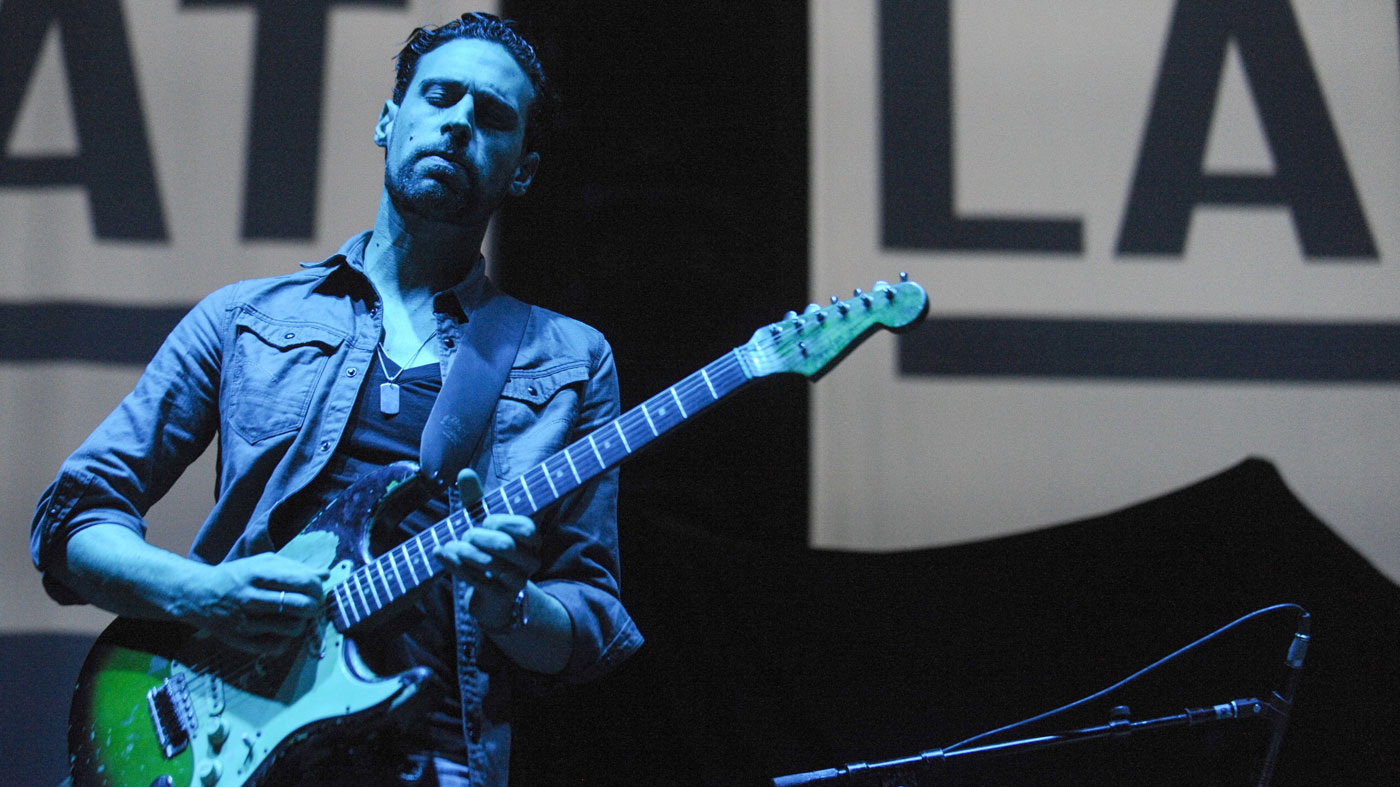
Finding his feet
You built your South African audience from the ground-up. What were the keys to your success?
“It was tough. There’s almost zero money at the beginning. No one knows you, it’s impossible to sell tickets to your shows and you’ve got to push through that bad spell to make a career out of it. That was the key, and in South Africa, it was touring constantly.
We would tour nine months of the year in South Africa - and it’s a small place, you know? A lot of times you had to make your own shows happen
“As soon as you’re not in a town for a little while, you’re almost forgotten about, so, jeez, we would tour nine months of the year in South Africa - and it’s a small place, you know? It doesn’t have the scene of the UK or the States or Germany. A lot of times you had to make your own shows happen.”
What was the most demoralising gig you played in those days?
“We did a gig in a very small town in South Africa, like a tumbleweed floating down the middle of the road type of a place. This was about 10 or 15 years after apartheid had ended, but it was still this racist community in this tiny little place.
“I don’t know why I booked a show there, but they were really excited to have us and we arrived there and they’d booked us for the annual spring dance. We got in there and we realised what we’d got ourselves into. We had to play four 45 minute sets to an audience that just couldn’t leave quick enough.
“We started playing BB King songs and just had four or five hundred people looking at us like, ‘What are we supposed to do to this?’ That was one of those scary moments when you kind of fear for your life a little bit, not that anyone threatened us, but you just had this ominous feeling where you were thinking, ‘Are we going to get out of here alive?’”
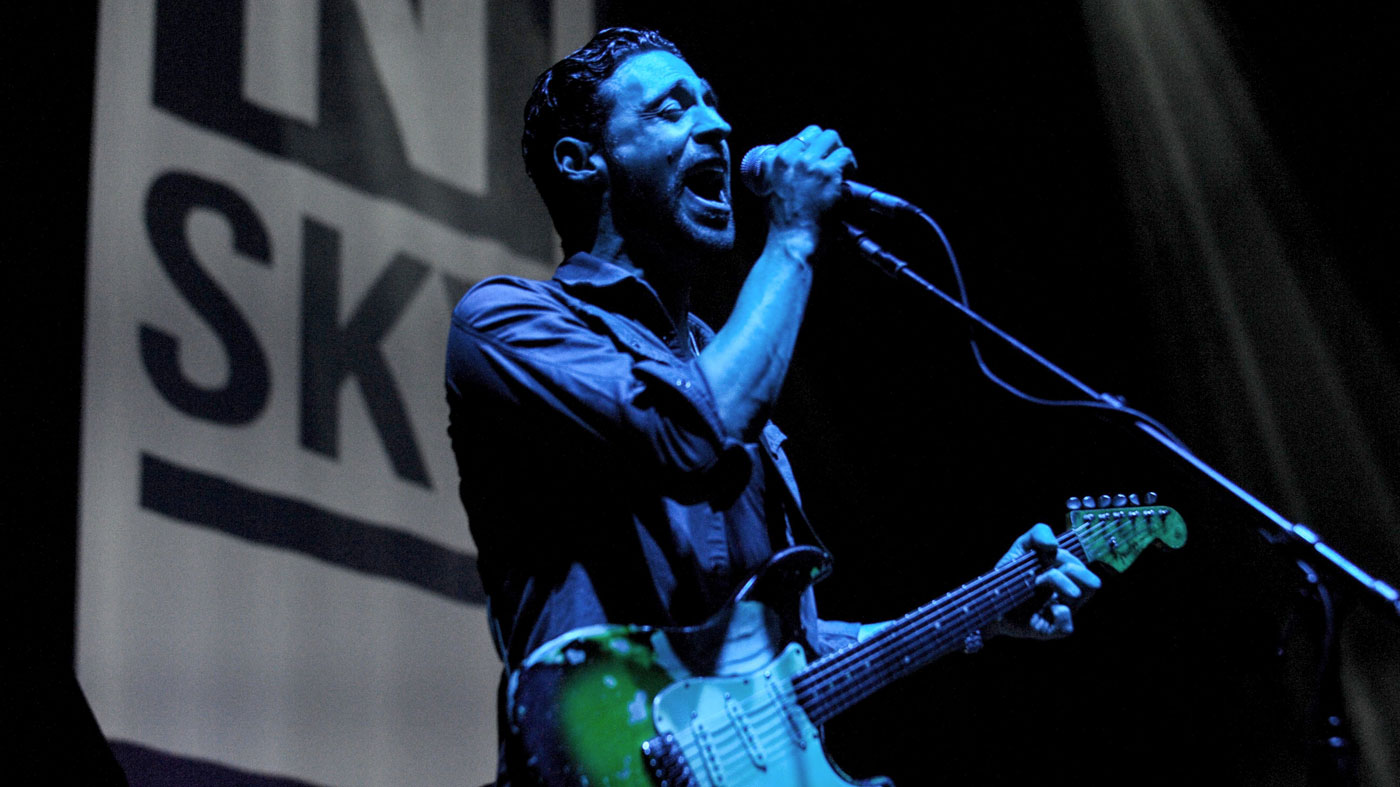
Blues roots
Was it listening to blues that made you to pick up the guitar in the first place?
“It wasn’t actually. It was Pink Floyd. Dave Gilmour was like ‘the guy’. Shine On You Crazy Diamond, that tune in particular, really got me into guitar playing. My favourite licks in that song were the blues-y licks and that made me look into the blues side of things, so I went back to Clapton and then went back in time and that’s where it started for me.
I’ve really focussed on the songwriting of the two records, far more heavily than just the performance
“Then I went back from there into like BB King and Albert King and Albert Collins, those 60s/70s blues cats and then back in time to Son House and Robert Johnson and the guys like that. It’s incredible, you can really hear, plain as day, the influences in Stevie Ray Vaughan’s playing of Albert King, or Hendrix, and it’s very apparent or, in Clapton’s playing, Freddie King.”
Your last two records, Invertigo and Dear Silence Thieves have both delved into more concise blues rock territory. Do you consider them natural bedfellows?
“It’s a similar direction, especially compared to previous albums I’ve done. I think it’s a lot to do with the producer I’m using, Theo [Crous], who’s a pop and commercial rock producer in South Africa. I bring in more roots-y, non-commercial tunes and he’s arranging them in a way that’s not compromising what I want out of the tune, so I think that’s the common thread between the two records.
“But I’ve also really, really focussed on the songwriting of the two records, far more heavily than just the performance, or just the guitar part. That’s still a big thing for me, but now the song has to be right before I think about how cool the solo is going to be.”
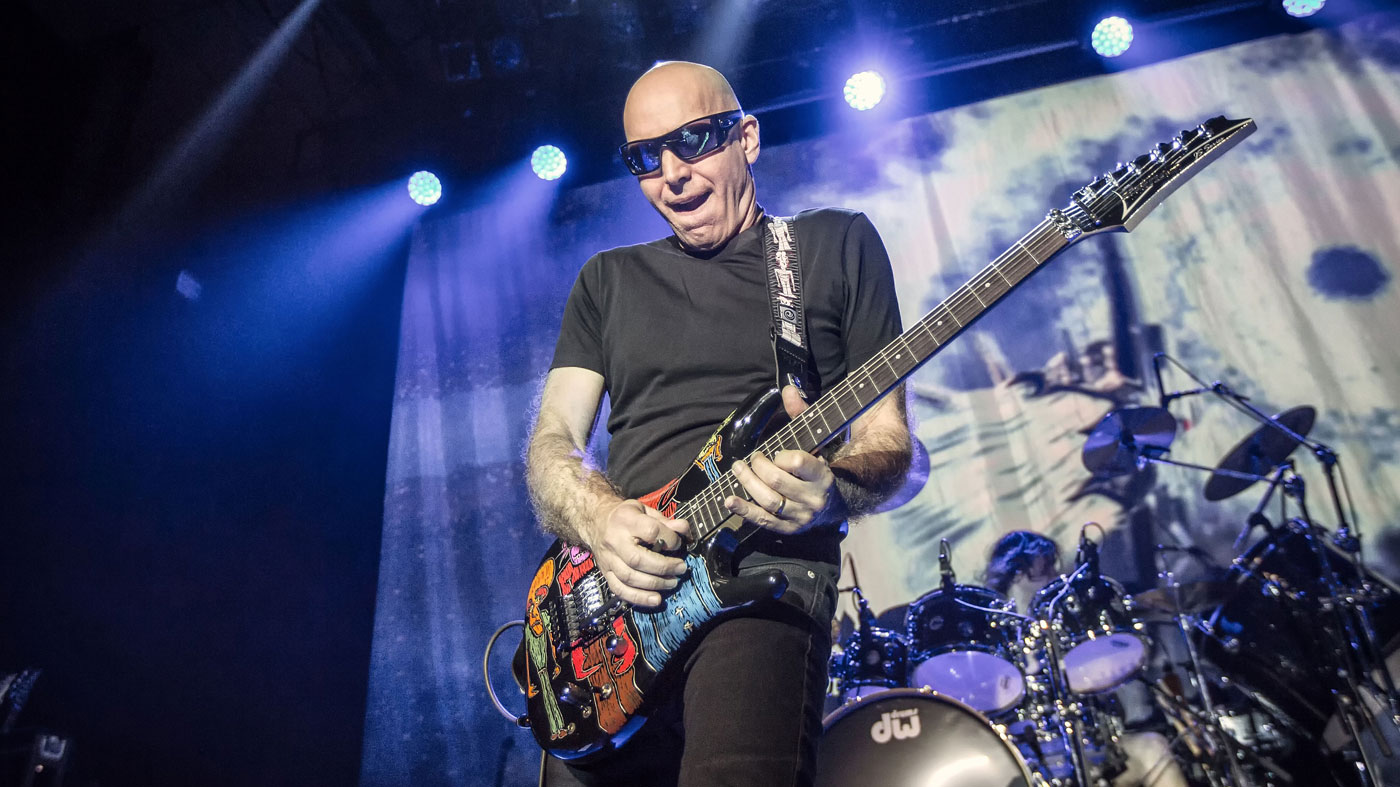
Satch attack
You toured the UK/Europe with Satriani at the end of your …Silence Thieves run. How was that experience?
“It was incredible. The first night was really intimidating because the whole band was watching the set from the wings and I was just like sweating blood onstage, you know?
Satriani would invite me into his room to warm-up with him. He had this prototype Marshall amp that they built him
“But after that, once you got that first one under the belt, it was great. But I must say that Joe Satriani was the nicest guy that I’ve met in my life. He was the sweetest guy, the most helpful guy, the most un-egotistical person.
“The first night he came late to the venue because his bus arrived late and he just popped his head into the room and said, ‘Hey, I’m Joe!’ and it was like, ‘Yeah, no shit!’ By the middle of the tour he would invite me into his room to warm-up with him. He had this prototype Marshall amp that they built him, like a practise amp, that’s going to be a Joe Satriani model, so he was like, ‘Come and play this and give me your thoughts on it.’ It sounded killer. It was a serious piece of gear!”
What did you pick up much from watching him prepare and perform?
“What I really picked up from him, because we’re quite different players, is consistency - just how consistently brilliant he is every night. He doesn’t seem to ever have one of those dodgy nights where he’s not quite on it. He was telling me it’s all about headspace and getting into the right headspace before you go onstage and that was quite an eye-opening thing for me.”
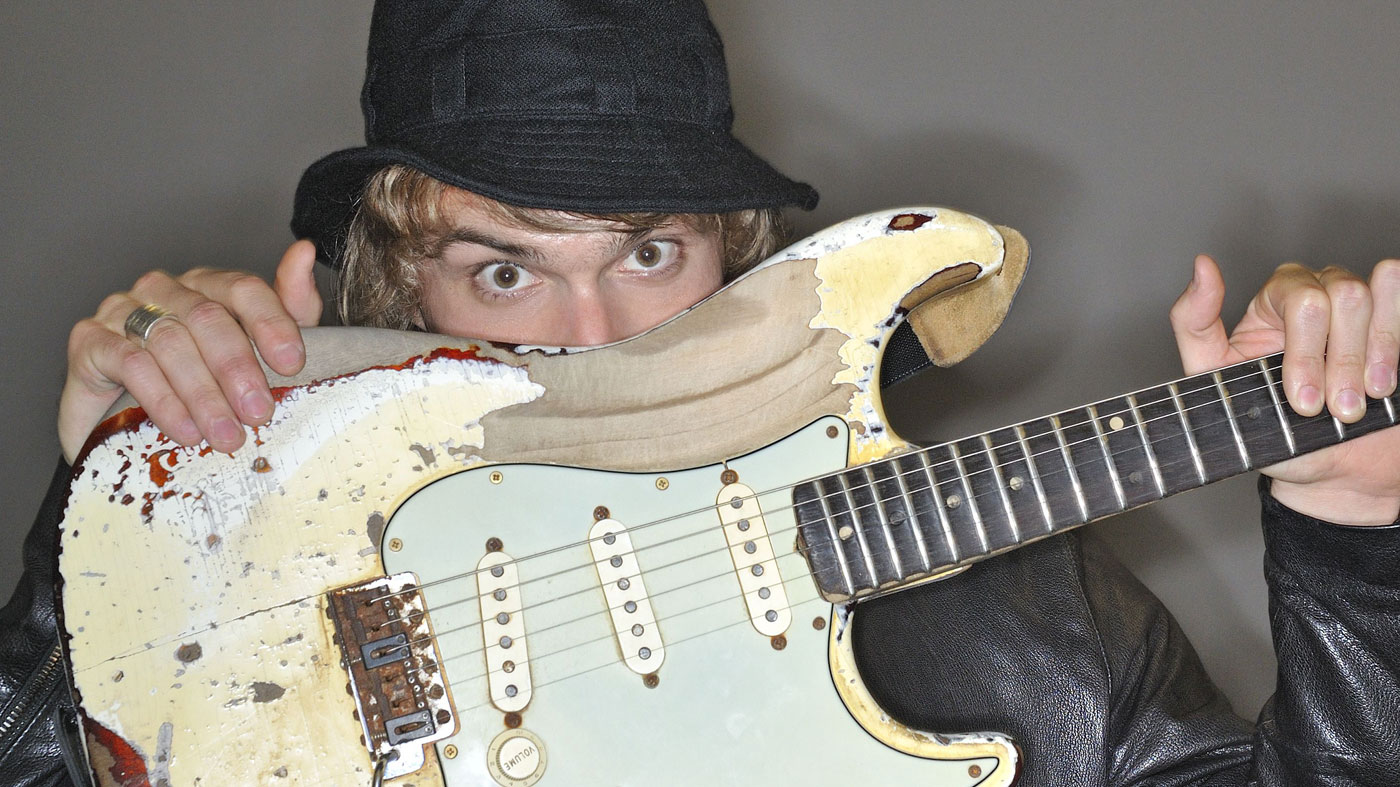
Ace Sayce
You’ve got a really beefy tone for a Strat player. How would describe your perfect tone?
“If I’m perfectly honest, the best tone I’ve heard in my life was from Philip Sayce [pictured]. As a Strat player, I’ve never heard anything like that, ever - not from Stevie Ray Vaughan, not from anyone. Just personally, that’s what I want to hear out of a Strat.
Philip Sayce's clean sounds are tremendous. It’s so three dimensional
“His clean sounds are tremendous. It’s so three dimensional. It’s classic Strat, but it’s on steroids and it’s so chewy and juicy. He’s given me such fantastic tips.
“I also like to tune everything down a semi-tone, always, to an Eb tuning and then some songs are in a drop-Db and I really enjoy that sound, especially if you want to get like an Audioslave-Style riff. If I dare try to get a riff that size!”
So many blues players sound stale and self indulgent. How do you avoid those pitfalls?
“I think you’ve just got to get over yourself sometimes. Certain times of the night call for a gigantic solo - the big wank - and there’s nothing wrong with that, but if the solo’s really short on the album, live it might be extended by a few bars, but never for 20 minutes. So it’s always the song that will call for what solo is due. You can tell when the solo is going too long, the audience drifts off for a while.”
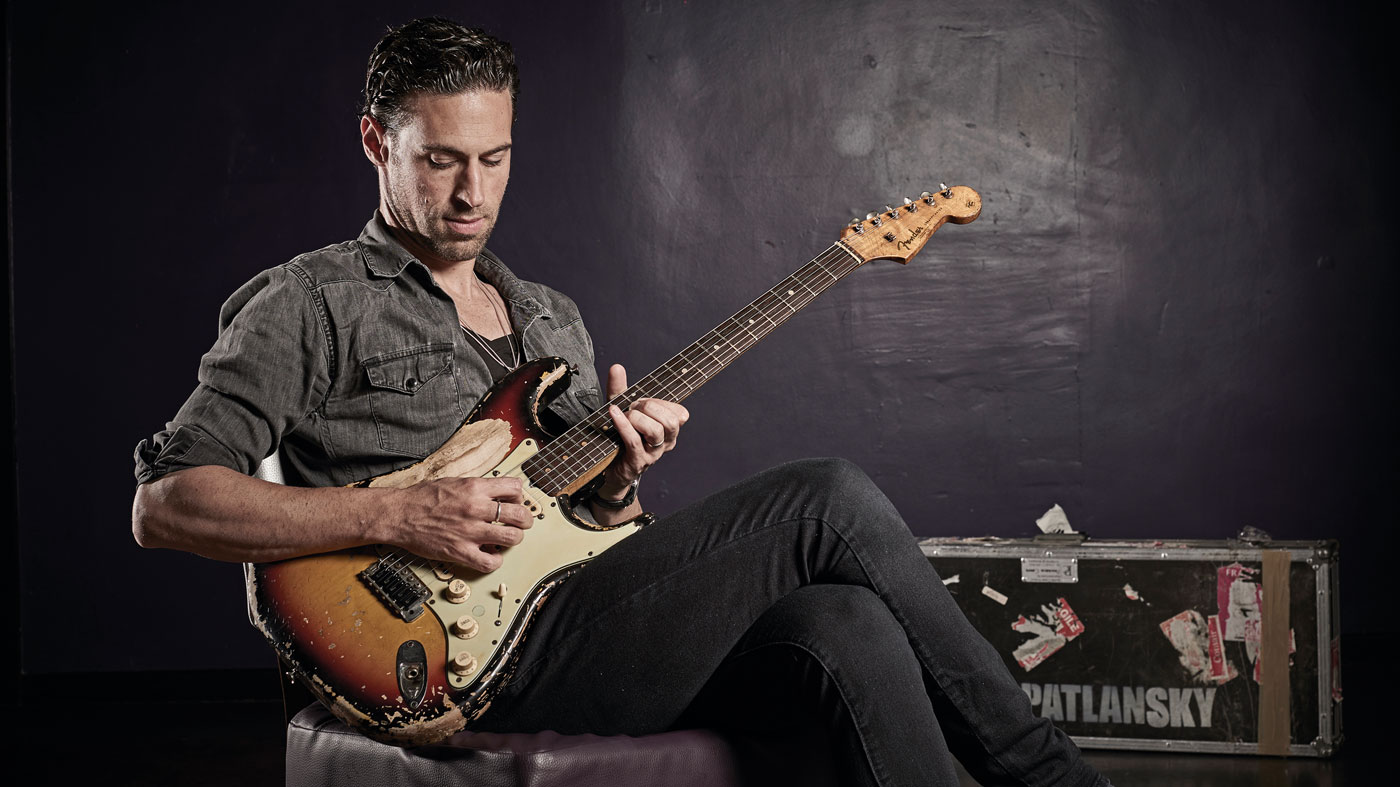
Serve your crowd
Is it more accurate to say that the solo should serve the audience, rather than the song?
If you play a line or a lick and someone in the audience reacts to that, it gives you so much more confidence
“Yeah, big time! If you play a line or a lick and someone in the audience reacts to that, it gives you so much more confidence as a player that you play better and you play more musically, because you know at least one person is into it and you’re getting that feedback from the audience.”
The blues has come back into the mainstream and there is a whole new set of connotations around the genre. What does the blues mean to you now?
“Well, I see what I’m doing now as modern blues. I think the blues police would say ’That’s not blues!’ But for me, that’s where blues is and it’s always sad when it’s put into that pigeonhole of ‘It’s got to be 12-bar and you’ve got to sing about whisky and women.’ To me that’s not blues anymore. That stuff evolved from something else, from Robert Johnson and so on, and it evolved into that 12-bar thing. Now it’s got to evolve again and I think that this is where blues is going.”
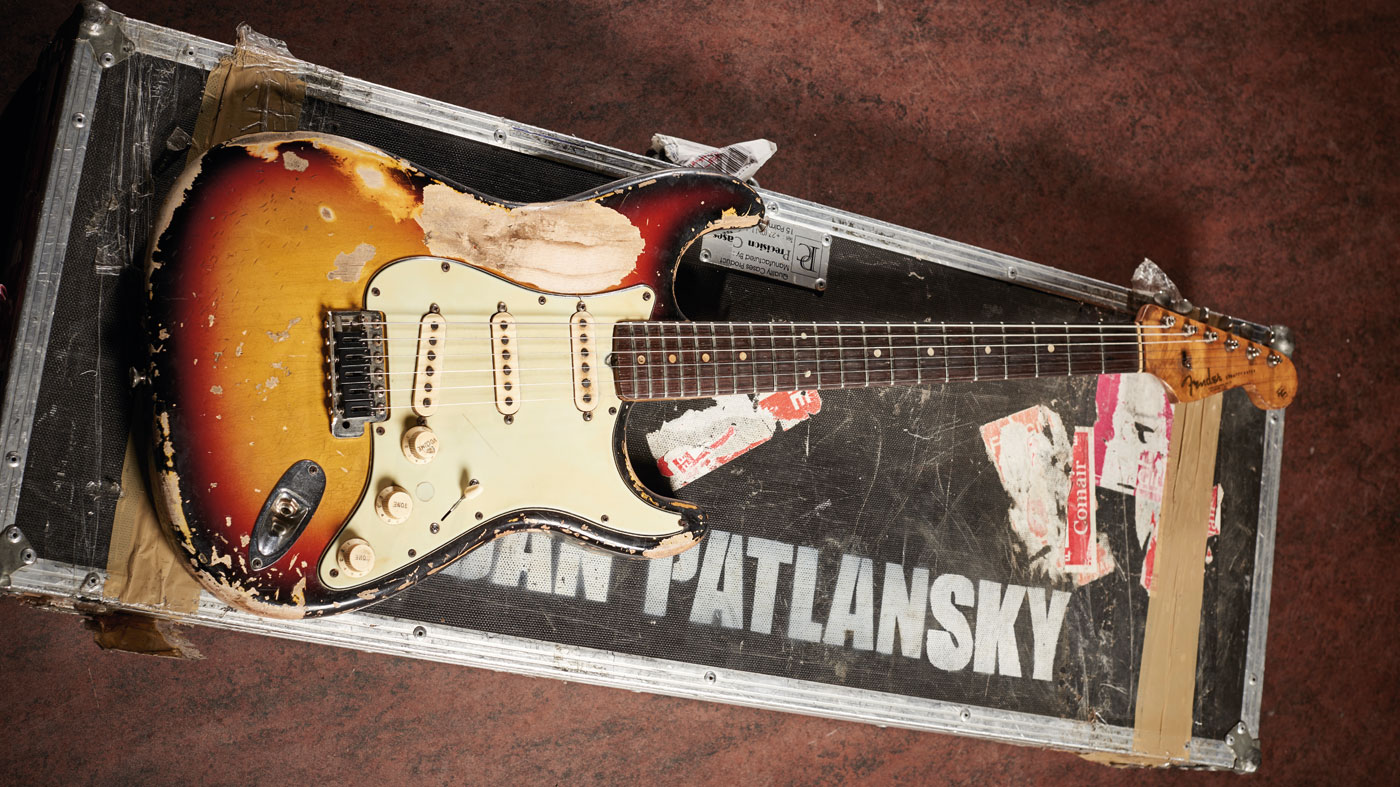
Trail-blazer's toolkit: 1962 Fender Stratocaster
“I’m fortunate enough to own a 1962 Sunburst Strat. The original ’62 pickups died years ago and I searched high and low for a replacement.
My Strat came in in the early 2000s and I phoned the dealer 10 times a day for an entire week
“I eventually found this guy in Australia, Slider Pickups, and they are the closest thing I’ve ever heard to the real thing, if not better.
“We’ve got a guitar dealer in Johannesburg and, for the most part, anything that comes into the shop of value is normally on a plane to London the next day. My Strat came in in the early 2000s and I phoned him 10 times a day for an entire week, just telling him ‘Don’t send it to London!’ He sold it to me to just get me off his back, I think! I paid probably about £1,500 for it, so absolutely nothing. Deals like that only come around once in a lifetime…”
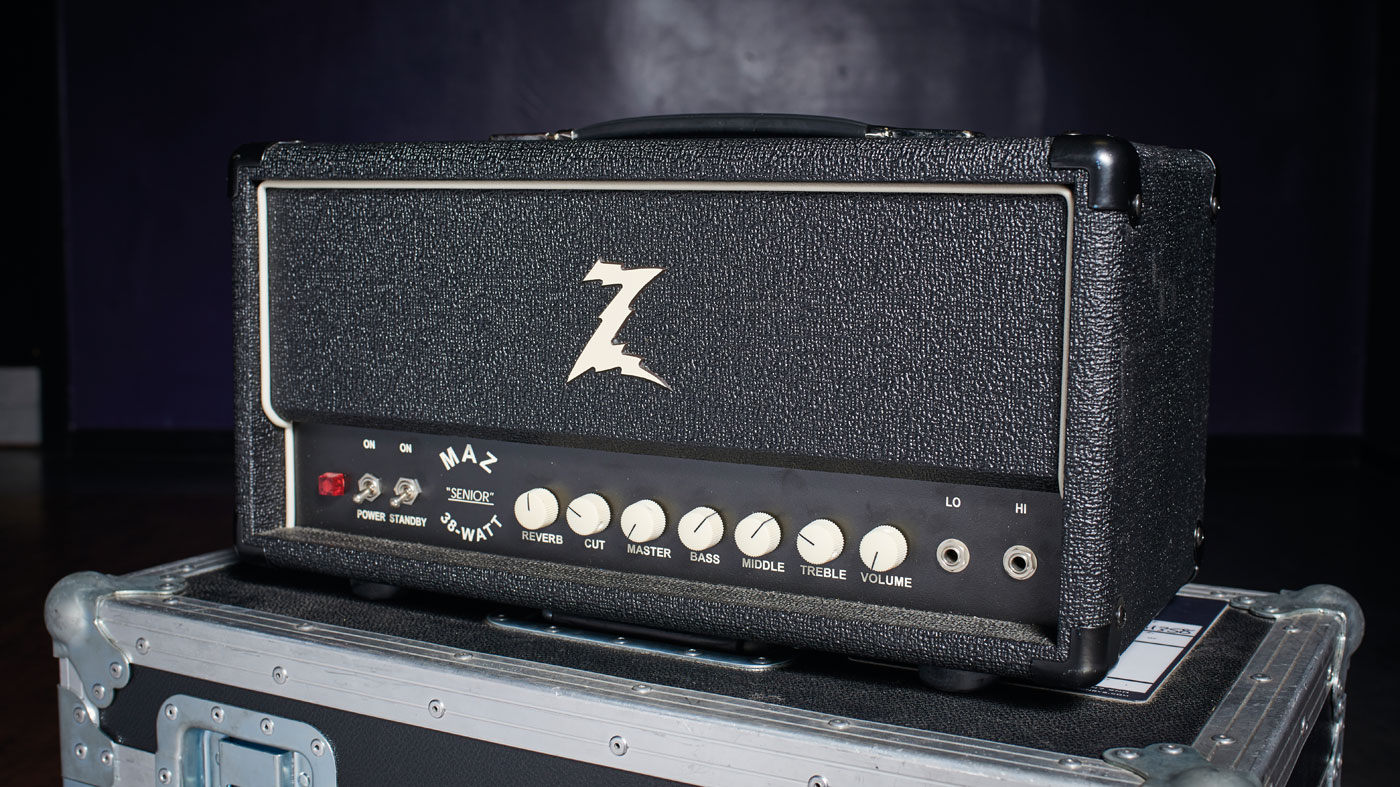
Trail-blazer's toolkit: Dr Z MAX 38
“On this tour I’m using a MAZ 38, which is like a Vox-style amp. It’s not my first choice but it’s an incredible amp.
It’s been thought about and it’s just the most delicious-sounding amp
“I normally use a Dr Z EZG-50, which is like a Fender Super Reverb head. It’s the only 6L6 head that they make, but it’s just incredible. I don’t know what it is about that head that’s got such a special sound.
“When you boost the midrange it’s not just any old midrange, it’s a particular frequency. It’s been thought about and it’s just the most delicious-sounding amp.”
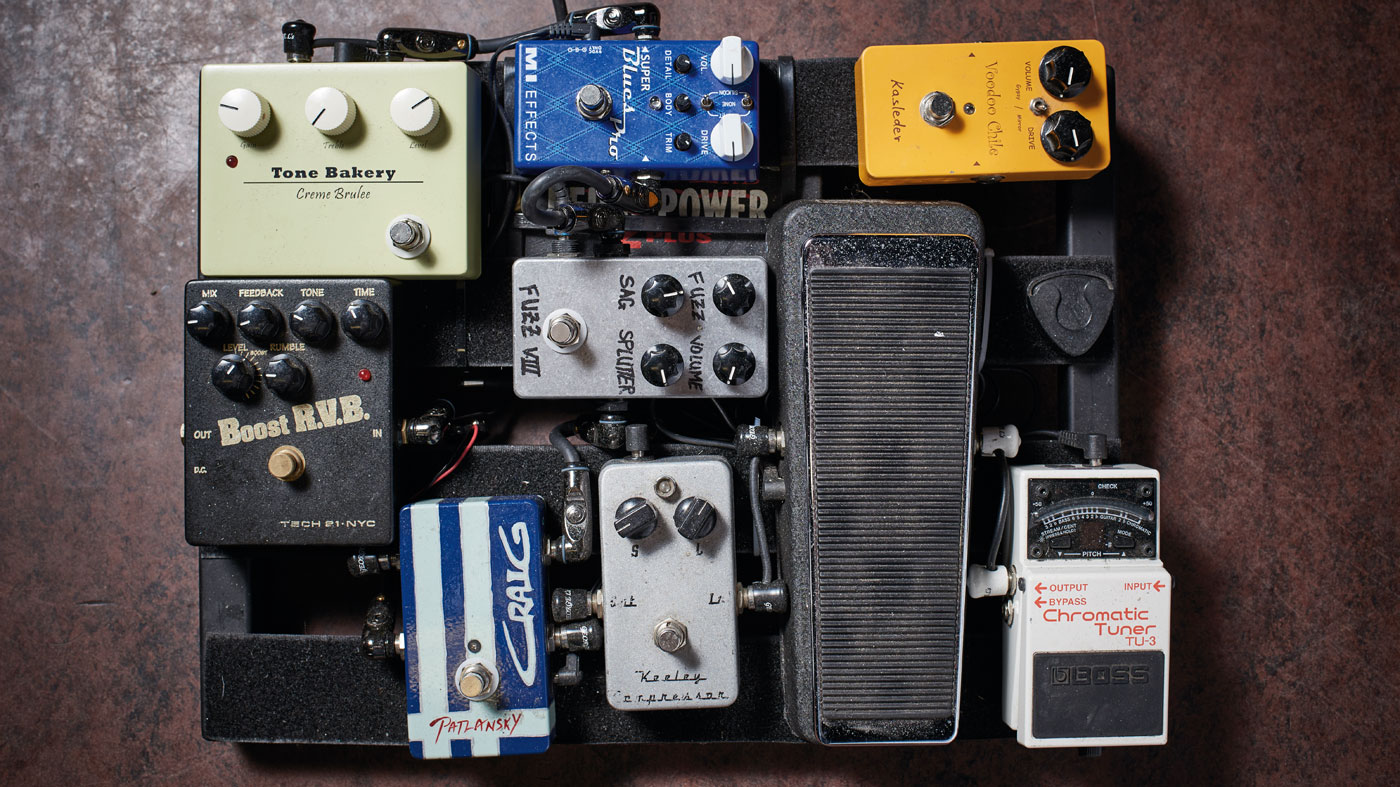
Trail-blazer's toolkit: pedalboard
Tone Bakery Creme Brûlée
“I picked that up in Holland for like 90 euros and that beats the 2000 euro or whatever a Klon [Centaur] goes for! You’ve got a capacitor on your volume knob and you can keep the pedal on and bring your volume down and you get this incredible tone. I got the [recommendation] from Philip Sayce and it really has blown my mind.”
Custom fuzz
This fuzz sounds great, but it doesn’t feel as crappy as other fuzzes
“My friend back home built this for me. I’ve always had this love-hate thing with fuzzes. They sound great, but when I play it it never makes sense to me, it feels different and the whole guitar feels weird. This fuzz sounds great, but it doesn’t feel as crappy as other fuzzes. It responds great, but it still feels nice and wooly.”
Keeley Compressor
“I take all of the compression off and I crank up the level and I leave it on the whole night, so I’ve got more signal hitting the front of the amp. It makes everything bloom a bit. Essentially, it’s just for volume, but I just really like the way the Keeley does it.”
RMC10 wah wah
“It’s one of those Real McCoy wahs. It’s got this hippy-looking guy on the back of it. [The guy who makes them, Geoffrey Tease, is] this wah guru from the States. He really knows his wahs and voices them really well.”
Tech21 Reverb
“When you’re touring with rental amps, more often than not the ‘verb is busted on the stage amp. I like ‘verb on certain songs, so I have a Tech21 reverb that I take with me.”
Don't Miss
Dan Patlansky talks improvisation, phrasing and playing more expressive blues
Matt is a freelance journalist who has spent the last decade interviewing musicians for the likes of Total Guitar, Guitarist, Guitar World, MusicRadar, NME.com, DJ Mag and Electronic Sound. In 2020, he launched CreativeMoney.co.uk, which aims to share the ideas that make creative lifestyles more sustainable. He plays guitar, but should not be allowed near your delay pedals.


